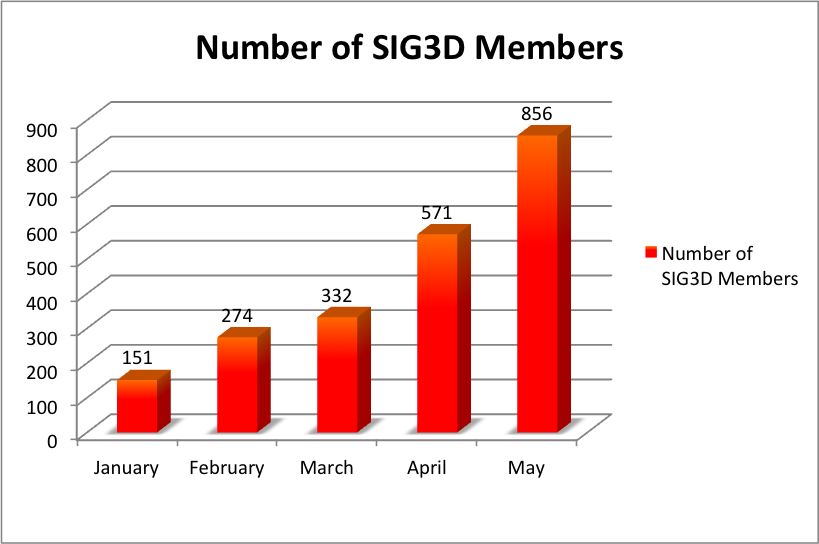

Many of you know that I directed the pilot for the world’s first 3D document camera at our elementary school a couple of years ago. The 3D Ladibug document camera is a fantastic learning tool; I saw great results with attention, learning, and behavior when using it at my school with teachers and students.
 Right now, Lumens Integration, Inc. – the creator of the 3D Ladibug – is hosting a video contest for educators. This contest gives educators the chance to showcase their best practices and innovative ideas with document cameras in four categories…. and possibly win some great prizes:
Right now, Lumens Integration, Inc. – the creator of the 3D Ladibug – is hosting a video contest for educators. This contest gives educators the chance to showcase their best practices and innovative ideas with document cameras in four categories…. and possibly win some great prizes:
Those who would like to compete in the contest need to complete a 1-5 minute video featuring a Ladibug document camera by May 1, 2013. What’s interesting is that on the contest website they offer to loan a doc cam to any educator for 30 days, so that all teachers have a chance to compete. Even though it has to eventually be returned, it’s a great opportunity for teachers without a digital camera, video camera or doc cam to use a powerful tool for demonstrations and media creation with their students for that month, too.
I know that, as educators, you are already putting so many hours into planning impactful learning experiences that will make a difference with your students. So, if you are interested in 3D or document cameras, this looks like a great way to get some recognition for all of that hard work… and bring cutting edge technology into your classrooms in the process!
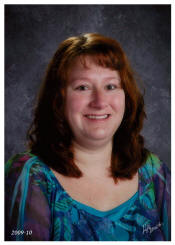 I would like to honor and introduce an incredible educator and 3D pioneer to the InDepthEducation audience. Kristin Donley is a highly effective science and STEM instructor at Monarch High School in the Boulder Valley School District (BVSD). Due to her passion, innovative teaching methods and commitment to her students, Kristin was recognized as the 2012 Colorado Teacher of the Year and 2011 Colorado Top Technology Teacher of the Year. She has recently expanded her work to include serving as an adjunct professor at the University of Colorado – Denver and as Boulder Valley School District Science Research Seminar Coordinator.
I would like to honor and introduce an incredible educator and 3D pioneer to the InDepthEducation audience. Kristin Donley is a highly effective science and STEM instructor at Monarch High School in the Boulder Valley School District (BVSD). Due to her passion, innovative teaching methods and commitment to her students, Kristin was recognized as the 2012 Colorado Teacher of the Year and 2011 Colorado Top Technology Teacher of the Year. She has recently expanded her work to include serving as an adjunct professor at the University of Colorado – Denver and as Boulder Valley School District Science Research Seminar Coordinator.
Since Kristin is an experienced stereoscopic 3D educator and leadership team member for ISTE’s SIG3D, I asked her to tell us a little more about her work and thoughts about the role of 3D in Education. Here’s what she said!
Q: How long have you been working with 3D technologies and in what capacity?
Kristin: I have been using 3D video content and interactives in the classroom for the past 3 and 1/2 years, as well as collecting data (pre-post tests, video taping, focus groups, and this year fMRI data) to ask the question of how 3D educational pedagogies affect learning, retention and motivation.
Q: What made you decide to integrate 3D teaching and learning into your classroom?
Kristin: Len Scrogran, a great mentor and educational technology specialist, got me involved in the 3D in BVSD pilot, and my love and enthusiasm grew from there.
Q: In what ways have you found 3D technologies innovative, unique and/or helpful in education?
Kristin: My data shows that there is improved retention especially of abstract complex content (e.g., the process of DNA replication and all the players and steps involved). Essay writing has increased by 10% and student focus/motivation is improved. We hope to see how 3D affects neural pathways in our phase 3 of our research.
Q: What are your thoughts on student use (K-12 or college) of 3D technologies?
Kristin: Besides helping students better understand abstract concepts, 3D has engaged our students and the use of it has encouraged them to pursue projects in making 3D animations themselves. We recently received a grant to buy 3D software and two mac stations to let students delve into the world of 3D animation creation. My involvement in the 3D pilot these past years has also made me think about learning in a whole new way. I am creating better assessments that utilize filming and manipulatives to assess whether students understand the abstract concepts rather than standardized tests. From these new approaches, I am better able to ascertain whether my students understand the concepts and I am better able to identify the misconceptions and come up with re-teaching plans.
Q: How can readers find out more about your work?
Kristin: You can find out more by visiting my teacher website at
https://sites.google.com/a/bvsd.org/donleyscience/about-me.
You can also learn more about the use of 3D at Monarch High School from Kristin Donley and her team by watching this video!

This time of year is a whirlwind for educational technology as FETC and TCEA, two of the nations largest educational technology conferences, run back to back in Orlando, Florida and Austin, Texas. Here is a recap of some s3D highlights from FETC last week… and a heads up of what’s to come at TCEA.
Despite minimal workshop and session representation for stereoscopic 3D at FETC, there were several 3D technologies featured in the exhibit hall.
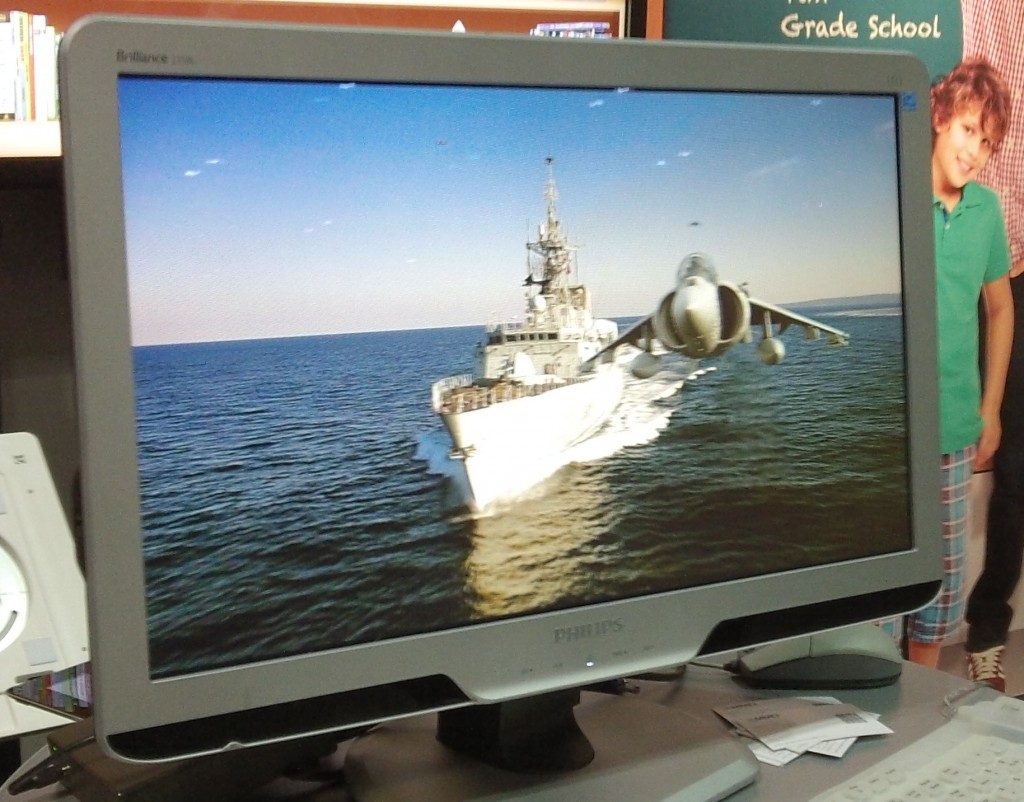 Av Rental Depot from Boca Raton, FL was demonstrating a variety of 3D educational content and clips on their Phillips 23″ 3D Autostereoscopic Monitor. That’s right — 3D with no glasses! In addition to this smaller monitor, Phillips is also offering a 42″ and 55″ version. The price range is still a little high for the typical K-12 classroom, but the high quality of this monitor promises expanding possibilities in the future!
Av Rental Depot from Boca Raton, FL was demonstrating a variety of 3D educational content and clips on their Phillips 23″ 3D Autostereoscopic Monitor. That’s right — 3D with no glasses! In addition to this smaller monitor, Phillips is also offering a 42″ and 55″ version. The price range is still a little high for the typical K-12 classroom, but the high quality of this monitor promises expanding possibilities in the future!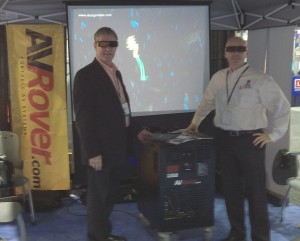 School Specialty’s exhibit featured the dynamic all-in-one 3D cart from AV Rover. Packed with a 3D laptop, 3D projector, class set of active glasses and a s3D content bundle, the AV Rover provided for educators at the conference a great look into the world of educational stereoscopic 3D.
School Specialty’s exhibit featured the dynamic all-in-one 3D cart from AV Rover. Packed with a 3D laptop, 3D projector, class set of active glasses and a s3D content bundle, the AV Rover provided for educators at the conference a great look into the world of educational stereoscopic 3D.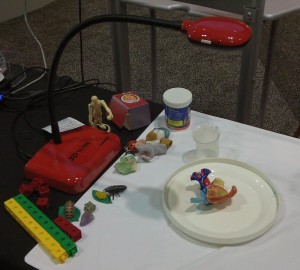 Of course, the 3D Ladibug document camera was in full swing at the Lumens booth. In addition to basic demonstrations to visitors during exhibit hall hours, I gave full presentations on our 3D Ladibug elementary pilot with tips and tricks two times a day. Based on the
Of course, the 3D Ladibug document camera was in full swing at the Lumens booth. In addition to basic demonstrations to visitors during exhibit hall hours, I gave full presentations on our 3D Ladibug elementary pilot with tips and tricks two times a day. Based on the 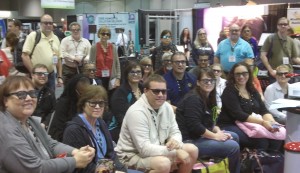 packed attendance and comments from attendees, the interest in stereoscopic 3D has significantly increased since last year at FETC. With the cost of implementing 3D with TVs or projectors dropping, more and more schools are considering adding 3D to their classroom technology.
packed attendance and comments from attendees, the interest in stereoscopic 3D has significantly increased since last year at FETC. With the cost of implementing 3D with TVs or projectors dropping, more and more schools are considering adding 3D to their classroom technology.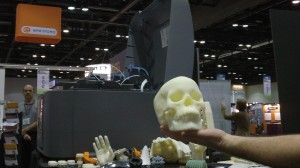 Finally, a special mention for Stratasys, who had their classroom friendly 3D printer and printed samples available in the exhibit hall. Expanding students abilities to dream and design in 3D, such printers can be a great addition to the hands-on 3D classroom.
Finally, a special mention for Stratasys, who had their classroom friendly 3D printer and printed samples available in the exhibit hall. Expanding students abilities to dream and design in 3D, such printers can be a great addition to the hands-on 3D classroom. Haven’t gotten enough 3D? Good! Today, starts the TCEA conference in Texas. Last year, we saw a lot more educational s3D represented than at other conferences and I am very excited to check out what the exhibitors have in store this year!
Haven’t gotten enough 3D? Good! Today, starts the TCEA conference in Texas. Last year, we saw a lot more educational s3D represented than at other conferences and I am very excited to check out what the exhibitors have in store this year!
Plus, Len Scrogan, 3D expert and fellow leadership team member for ISTE’s SIG3D, will be presenting on When 3D Comes to School later this afternoon, 3:30-6:30 PM, TX time. If you are already in Austin, definitely try to check it out!
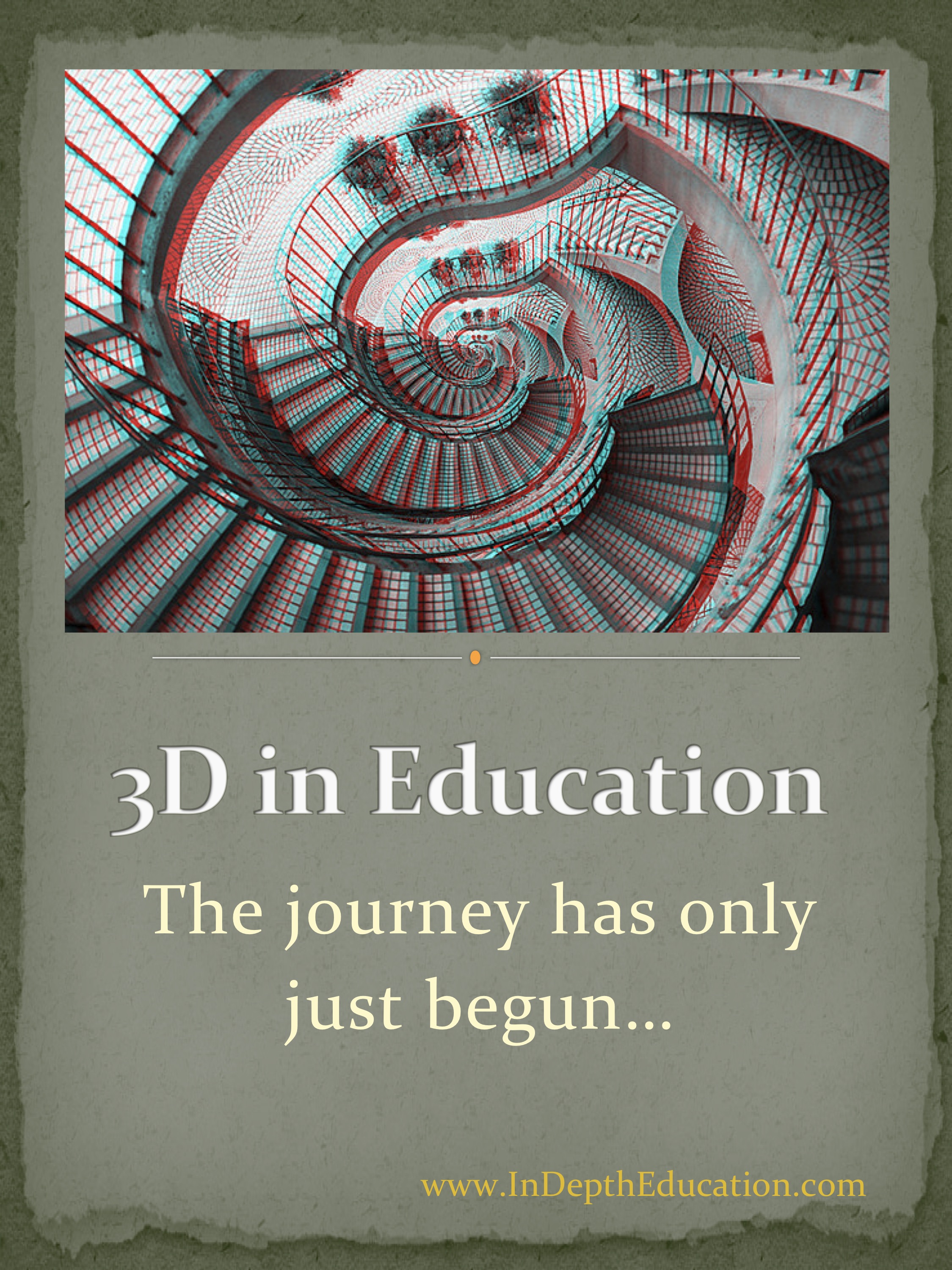 Is anyone really teaching in 3D?
Is anyone really teaching in 3D?
Isn’t 3D just a fad?
Does stereoscopic 3D really help students?
As I’ve become more involved in the field of educational stereoscopic 3D over the last few years, it has not been uncommon to hear these types of questions. More often than not, people are surprised that the use of stereoscopic 3D falls toward the top of my list of the most important educational technology innovations of the 21st century.
Yet the truth is —- educators are teaching in 3D and students are learning. Widespread applications of stereoscopic 3D technologies are taking place in educational environments around the world… in K-12 schools, higher education, medical and military training, and even museum education programs. High school teachers in Boulder Valley, Colorado are using 3D content and simulations to instruct students in complex science topics. Elementary students in Lakeland, FL have been bringing classroom manipulatives to life with a 3D document camera. A class of kindergartners in San Diego, CA has even created a 3D movie worthy of a film award. And these are just the tip of the iceberg when it comes to powerful examples of teaching “in depth.”
The emerging application of stereoscopic 3D in education is a global phenomenon. The applications mentioned above are not just used by a few “fad” teachers in the United States. In addition to 3D use across the country, the use of stereoscopic 3D is growing rapidly around the world. Educators and innovators in Europe, Asia and South America are quickly learning to harness these dynamic technologies. In fact, at the International Society for Technology in Education 2012 Conference in California, about 25% of the attendees represented International institutions at our collaborative meeting on 3D in Education. In that room, educator after educator shared stories about how the use of stereoscopic 3D was truly benefitting their students’ learning, creativity, behavior and engagement.
It is an exciting time to be a 3D Educator. Excitement and innovation abound. Communities and camaraderies are forming. And I invite you to stay tuned to In Depth Education to learn more about how to dive into stereoscopic 3D learning and creating in the classroom… The 3D in Education journey has only just begun.
With so many educational products and resources using the term “3D” in such diverse ways, some may be asking…
What type of 3D is “stereoscopic 3D” anyway?
To that, I invite the Simpsons family to join us.
These three images capture the differences between 2D, “rendered” 3D and stereopscopic 3D.
2D: The image on the left is traditional Simpsons, two-dimensional animation.
r3D: The middle image is “rendered 3D,” where one sees a two-dimensional image of a three-dimensional object. This type of 3D rendering is used in educational applications like Second Life, Active Worlds or Xtranormal.
s3D: The third image is Stereoscopic 3D, in this case as red-cyan anaglyph. When viewed through 3D glasses, the third image has depth, giving the appearance that the objects are in front of or behind the image plane.
In educational applications, the realistic experience of the s3D objects causes students to feel like they can actually reach out, touch and interact with them. Stereoscopic 3D is currently found in four basic formats – anaglyph (red-cyan), polarized passive (common in movie theaters and with many 3DTVs), active-shutter (used with DLP projectors and many 3DTVs) and autostereoscopic (uses a parallax barrier like the Nintendo 3DS). An explanatory infographic of these formats can be found here: S3D Basics: How 3-D Works.
In the coming weeks, we will begin to examine a wide variety of educational stereoscopic 3D content and software, hardware tools and practical classroom applications, as well as showcases of successful student projects using stereoscopic 3D. I invite you to dive into this journey of teaching and learning “In Depth!”
Just getting started with stereoscopic 3D? Here is a helpful infographic created by OnlineSchools.org that explains how the four basic types of stereoscopic 3D viewing work!
Discover how stereo 3D visualization technology is being used effectively in K-12 classrooms, how it affects student thinking and performance, and why it matters. (Poster Session)
In the days, weeks and months to come, this will be a place to find out about emerging technologies, the release of exciting 3D products, practical lesson plans and to hear from educators who are using 3D technologies with their students.
Please, consider subscribing to this blog. With your subscription, you will also receive a free subscription to the In Depth Education e-newsletter!
If you are interested in being a contributor to this blog, please e-mail Nancye Blair at nancyeblair@engagingeducation.net.
Thanks and enjoy getting “in depth” with us!
~Nancye
Proudly powered by WordPress Theme: Adventure Journal by Contexture International.
Recent Comments